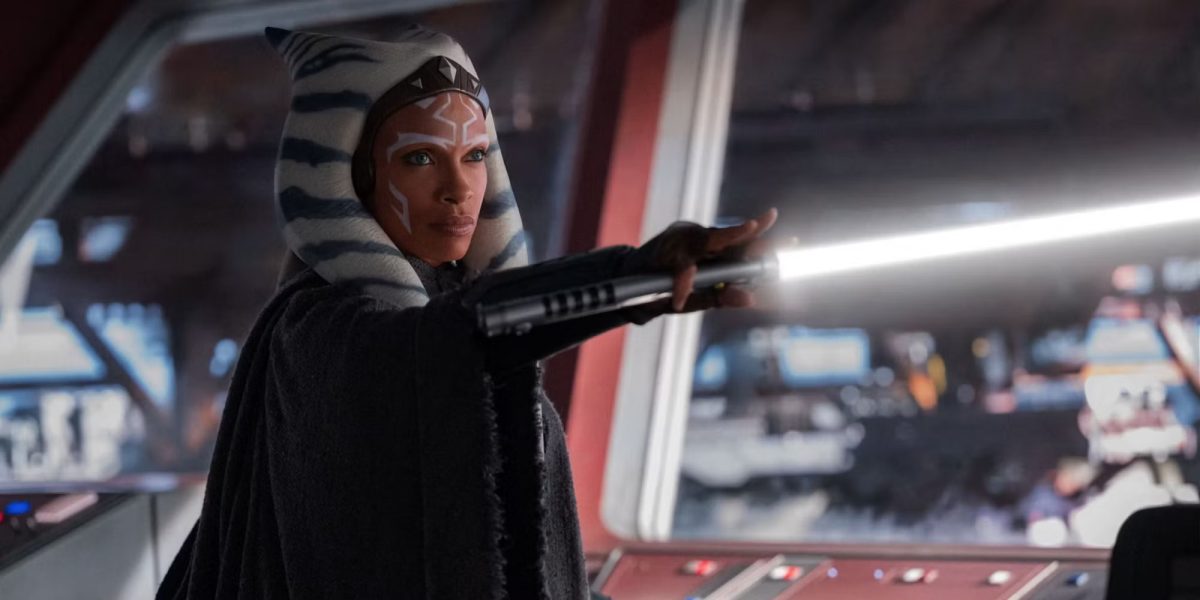“Star Wars: Ahsoka” is a fun, nostalgia-fueled romp through Star Wars history and lore, told by just about the only man who could actually pull something like this off: Dave Filoni.
Filoni, the series’ writer and executive producer, manages to fit something from just about every project he has worked on into this series: the titular Ahsoka Tano (Rosario Dawson) and her droid companion Huyang (David Tennant) from “Star Wars: The Clone Wars,” the planet Lothal and just about every character “Star Wars: Rebels,” and the general place in the Star Wars Timeline of “The Mandalorian.”
Yet even with all of those connections, this series doesn’t feel too crowded or stale. Filoni manages to find just the right balance of nostalgic old and intriguing new to make this series exciting and fun.
Something I find especially important to note is that “The Clone Wars” and “Rebels” were animated series: not only are characters being brought into a new series, but a completely new medium of television, with new actors and a new look. But somehow, even with all that is going on in this series, these transitions feel natural and barely register after a few minutes.
Everything in “Ahsoka” just feels so natural. All of the characters Filoni brought back – from the aforementioned Huyang to General Hera Syndulla (Mary Elizabeth Winstead) and her droid Chopper – make sense to the story and just feel good to have back on the screen- nothing feels forced or evocative of “fan service.”
Seriously, I can’t tell you how good it feels as a Star Wars fan to see the characters I grew up with in animation now in live action, talking and fighting and just living in the Star Wars universe once again.
The new characters aren’t overshadowed by those returning, either. Baylan Skoll (Ray Stevenson) and Shin Hati (Ivanna Sakhno) are both intriguing villains who have no trouble keeping a viewer’s attention.
Any lingering doubts that this series was one big money-grab aimed at nostalgic Star Wars fans faded rather quickly as well: “Ahsoka” has a clear story to tell, with direction, genuine excitement, and a purpose- it doesn’t exist just to exist.
The show kicks off with Ahsoka finding a map, and from that point on is filled with drama, fighting, and cool new bits of Star Wars lore, all centered around the ultimate end destination of the map: the location of the long-lost Grand Admiral Thrawn (Lars Mikkelsen) and Jedi Ezra Bridger (Eman Esfandi).
Of course, that’s all from the perspective of a lifelong fan who has religiously kept up with all things Star Wars. If you’re a newer fan, or you only have seen the movies and TV series, a lot of the nostalgia that makes this show so fulfilling will probably be lost on you, and some of the backstory to these characters will be lost.
I do think this series could do a better job of giving just a little more information to new fans, but it still has plenty to offer both new and old fans alike:
The fight scenes are beautifully choreographed and filmed – I struggle to name any Star Wars film or TV show with better lightsaber combat.
It certainly doesn’t have the dialogue of “Star Wars: Andor,” but “Ahsoka’s” exploration of relationships is thought-provoking and meaningful in its own right. Natasha Liu Bordizzo (as Sabine Wren) and Ray Stevenson in particular turn in masterful performances. The political scenes in the series are the only place where dialogue feels a little overdone, but thankfully those scenes are few and far between.
I’d be remiss if I didn’t mention the score: Kevin Kiner’s soundtrack is everything a Star Wars score should be. It has just the right level of weirdness in it to make it feel otherworldly but is still moving and heart-pounding in a way that any good soundtrack should be.
“Ahsoka” surprised me, frankly. I came into it fearing that it would only be enjoyable because of the characters and places it brings back, yet some of the most enjoyable things about this series are the new. It is masterfully directed, well-written, and exciting – everything a Star Wars series should be.




